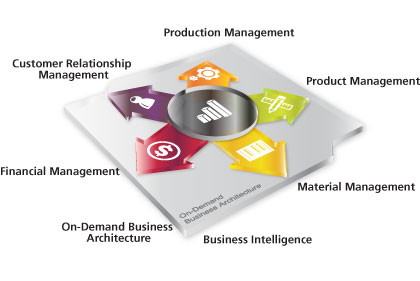Organization structure impact on ERP implementation success
ERP systems have long been in the limelight due to the indisputable potential and benefits organizations realize when implementing them successfully. However, numerous ERP implementation initiatives have suffered disastrous failures. The misfit between the characteristics of the adopting organization and the imposed standardized business process designs embedded in ERP systems constitutes a critical factor which negatively affects an ERP implementation success.
It is acknowledged that the organization structure is intimately related to the ERP implementation success. If the ERP system matches the organization, then the power structures, job profiles and responsibilities will not incur significant modifications. Generally, it is reported that the more intense the changes ERP systems impose the more fierce the organization resistance gets; the more fierce the organization resistance, the higher likelihood for the ERP implementation initiative to fail. The figure below depicts how the interrelation of organization structure and the ERP system affects ERP implementation.

Business processes standardization and business function integration are the two main characteristics of ERP systems. In essence, the standardized processes necessitate formalization of organizational rules, policies and procedures. Furthermore, theory suggests that ERP is intimately related to low levels of decentralization and structural differentiation. The aforementioned structural dimensions are expected to massively determine the success or failure of an ERP implementation project.
It is really important to examine how the different organizational structures respond to the dimensions outlined above. There are various different organization types. It is reckoned that the machine bureaucracy, professional bureaucracy, adhocracy and divisional structure form the mainstream of organization types.
Machine bureaucracy is adopted mainly from mature and large organizations operating in a relatively stable environment. This particular organization structure demonstrates limited horizontal decentralization and differentiation as there is the tendency to follow formal programs and plans. It is expected therefore that organizations adopting the machine bureaucracy are likely to positively affect the ERP implementation initiative.
Professional bureaucracy is principally embraced from law firms, universities and accounting firms. Individual professional within these organizations prefer to work independently on tasks defined by them. Professionals require work autonomy and any attempt for centralization would induce severe dissatisfaction, conflicts and resistance. Hence it is evident that this organization type is negatively predisposed to fitting the dimensions set in the beginning, thus making an ERP implementation project slightly difficult.
What is more, adhocracy is characterized by informality and high levels of decentralization. Within such organization structure individuals with disparate goals from different departments cooperate quite closely contributing to high levels of differentiation. It would seem logical to expect a lower level of match among adhocracy structures and the ERP characteristics.
Finally, organizations structured in a departmental way usually are composed of divisions with very different capabilities and requirements. Divisions operate in an autonomous manner with little if any communication among them. Nevertheless, the director of each division aims at formalizing the behavior of divisions via relatively standardized procedures which facilitate monitoring and control of their respective progress. Similar to professional bureaucracy, any attempt for centralization from the headquarters would provoke severe dissatisfaction, discomfort and resistance by the divisional managers.
Overall, the table below summarizes the aforementioned characteristics of each organization structure in relation to the structural dimensions of formalization, decentralization and differentiation.

It is evident that the theory suggests that machine bureaucracy is the most suitable organization structure among the four described as it demonstrates a high degree of fit with the ERP features, thus it is likely to facilitate a potential ERP implementation initiative. However, these results are the outcome of pure academic theory. In order to better understand whether the assertions are reliable or not, it is essential to have them empirically tested. Only after these relationships are complemented by anecdotal case evidence will it be possible to claim for their validity.
Morton, N & Hu, Q (2008), Implications of the fit between organizational structure and ERP: A structural contingency theory perspective, International Journal of Information Management, Vol.28, Issue 5, pp.391-402, (online ScienceDirect).
Pan, Y & Tang, Y (2010), Review of Misfit Issues between ERP Principles and Organizations, paper presented at the 2010 International Conference on Education and Management Technology, 2-4 November 2010, (online) URL: http://ieeexplore.ieee.org/stamp/stamp.jsp?tp=&a rnumber=5657545, (Viewed 10 May 2012).
 Dimosthenis Mavrogiannakis
Dimosthenis Mavrogiannakis

 Please wait - comments are loading
Please wait - comments are loading


 Loading…
Loading…

